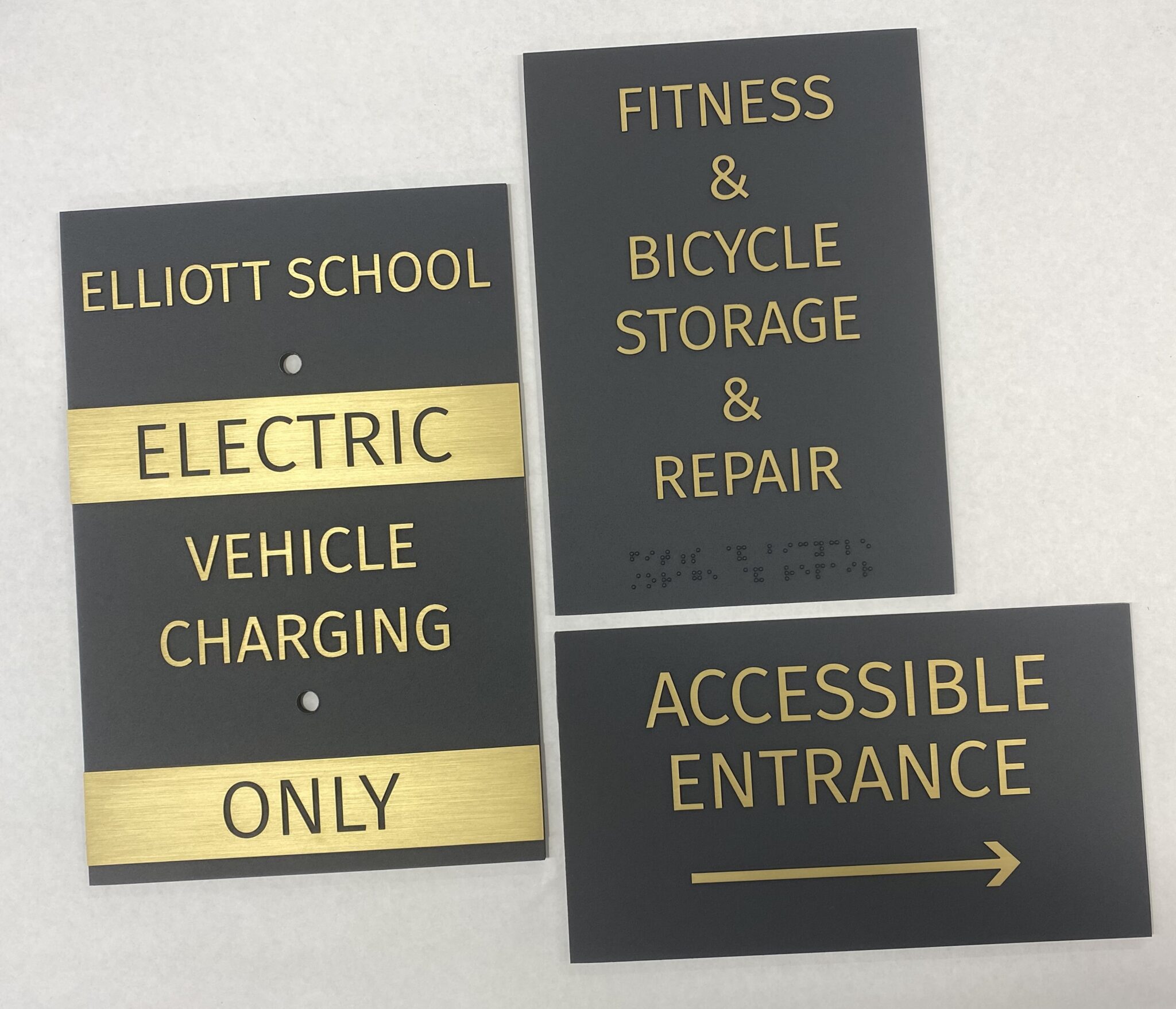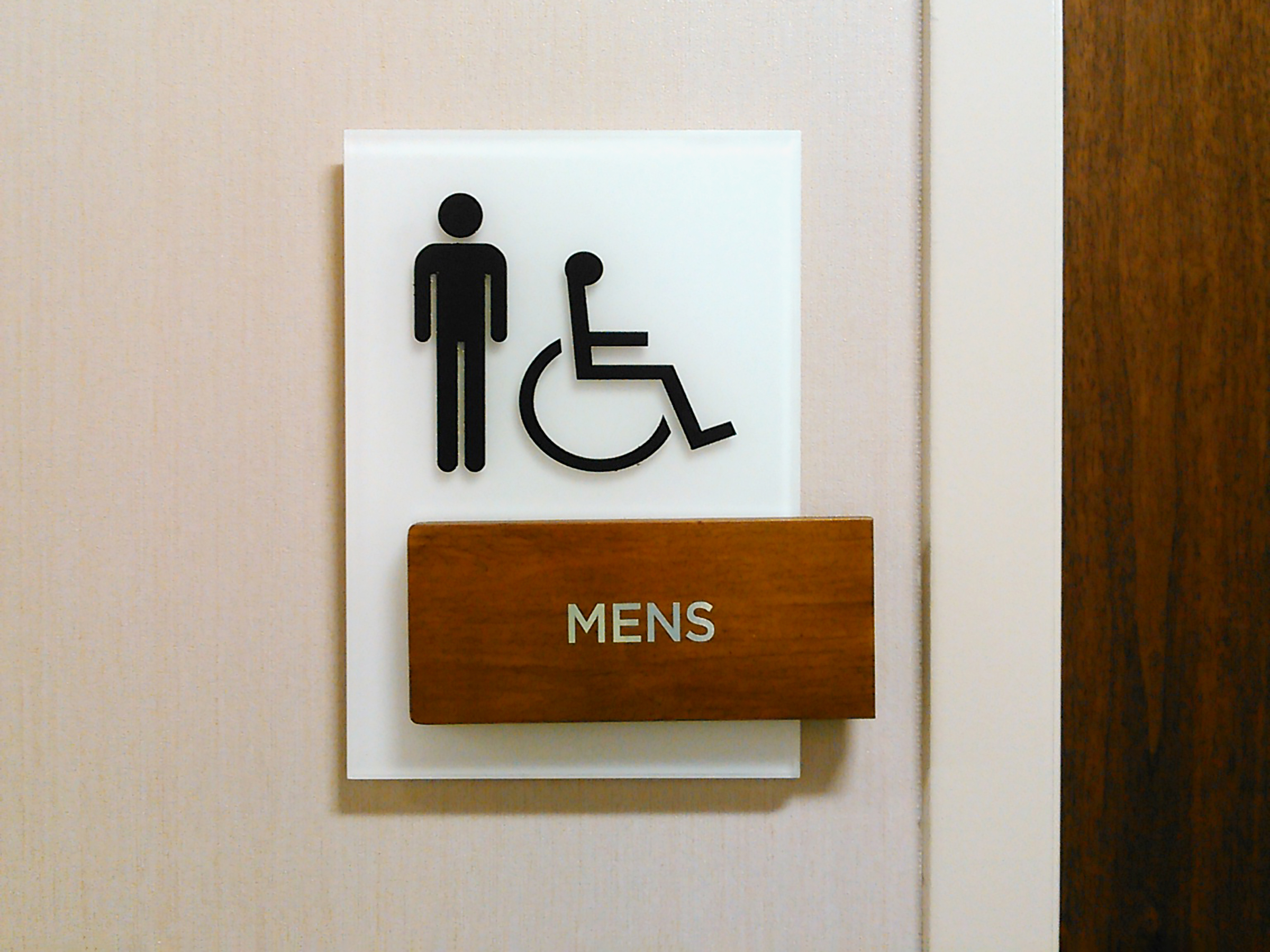Discovering the Secret Features of ADA Signs for Boosted Access
In the world of ease of access, ADA indications serve as silent yet powerful allies, making sure that areas are navigable and inclusive for individuals with disabilities. By incorporating Braille and tactile aspects, these indications break obstacles for the visually damaged, while high-contrast color systems and understandable typefaces provide to varied aesthetic requirements.
Value of ADA Conformity
Making certain conformity with the Americans with Disabilities Act (ADA) is critical for fostering inclusivity and equivalent accessibility in public spaces and work environments. The ADA, enacted in 1990, mandates that all public facilities, employers, and transport solutions fit people with impairments, guaranteeing they appreciate the same rights and chances as others. Conformity with ADA requirements not just meets lawful commitments yet likewise enhances a company's track record by demonstrating its commitment to variety and inclusivity.
One of the crucial aspects of ADA conformity is the application of easily accessible signs. ADA indications are made to make certain that people with handicaps can conveniently navigate via structures and rooms.
Furthermore, adhering to ADA laws can alleviate the risk of potential penalties and lawful consequences. Organizations that fall short to adhere to ADA standards may deal with charges or legal actions, which can be both damaging and economically troublesome to their public picture. Therefore, ADA compliance is indispensable to fostering a fair environment for everyone.
Braille and Tactile Elements
The unification of Braille and tactile aspects right into ADA signage embodies the principles of availability and inclusivity. It is generally placed under the matching text on signage to guarantee that individuals can access the details without visual support.
Responsive components expand beyond Braille and consist of increased icons and characters. These parts are made to be discernible by touch, allowing people to identify space numbers, restrooms, exits, and other important locations. The ADA sets details guidelines regarding the dimension, spacing, and placement of these tactile components to enhance readability and make sure uniformity across various settings.

High-Contrast Shade Systems
High-contrast color pattern play an essential duty in enhancing the visibility and readability of ADA signage for individuals with aesthetic disabilities. These systems are important as they optimize the distinction in light reflectance between text and background, making sure that signs are easily discernible, also from a distance. The Americans with Disabilities Act (ADA) mandates making use of details color contrasts to fit those with restricted vision, making it a crucial facet of conformity.
The efficiency of high-contrast shades hinges on their ability to stand out in different illumination problems, consisting of poorly lit environments and areas with glow. Commonly, dark text on a light background or light text on a dark background is employed to achieve optimal comparison. For circumstances, black text on a white or yellow history provides a plain aesthetic distinction that helps in useful reference quick recognition and understanding.

Legible Fonts and Text Dimension
When considering the style of ADA signage, the selection of understandable fonts and proper message size can not be overemphasized. These components are crucial for making certain that indications come to individuals with visual disabilities. The Americans with Disabilities Act (ADA) mandates that typefaces need to be not italic and sans-serif, oblique, script, very decorative, or of unusual kind. These demands help make sure that the text is quickly readable from a range and that the characters are distinguishable to varied target markets.
According to ADA guidelines, the minimum message height need to be 5/8 inch, and it should raise proportionally with seeing range. Consistency in message dimension adds to a cohesive aesthetic experience, aiding people in browsing atmospheres efficiently.
Moreover, spacing in between letters and lines is indispensable to clarity. Adequate spacing prevents characters from showing up crowded, enhancing readability. By adhering to these requirements, designers can substantially enhance accessibility, ensuring that signs serves its intended purpose for all people, despite their visual capabilities.
Reliable Positioning Methods
Strategic positioning of ADA signs is essential for taking full advantage of accessibility and making sure compliance with legal criteria. ADA standards state that signs need to be installed at an elevation between 48 to 60 inches from the ground to guarantee they are within the line of sight for both standing and seated people.
Additionally, indicators should be put surrounding to the lock side of doors to permit easy identification prior to entrance. Uniformity read the full info here in indication positioning throughout a center boosts predictability, minimizing confusion and enhancing total customer experience.

Final Thought
ADA signs play an essential role in promoting accessibility by integrating functions that resolve the needs of individuals with handicaps. Integrating Braille and responsive elements makes certain vital info comes to the visually impaired, while high-contrast color plans and readable sans-serif typefaces boost exposure across numerous lighting problems. Reliable positioning methods, such as suitable mounting heights and critical areas, even more promote navigation. These elements collectively promote an inclusive atmosphere, emphasizing the importance of ADA compliance in making certain equal gain access to for all.
In the realm of access, ADA signs offer as silent yet effective allies, ensuring that areas are comprehensive and navigable for individuals with handicaps. The ADA, established in 1990, mandates that all public centers, companies, and transportation services accommodate people with specials needs, guaranteeing they delight in the same civil liberties and chances as others. ADA Signs. ADA signs are designed to make certain that people with impairments can quickly browse through spaces and buildings. ADA guidelines stipulate that indicators ought to be mounted at a height in between 48 to 60 inches from the ground to ensure they are within the line of sight for both standing and seated people.ADA indicators play an essential duty in advertising availability by integrating features that attend to the requirements of individuals with disabilities